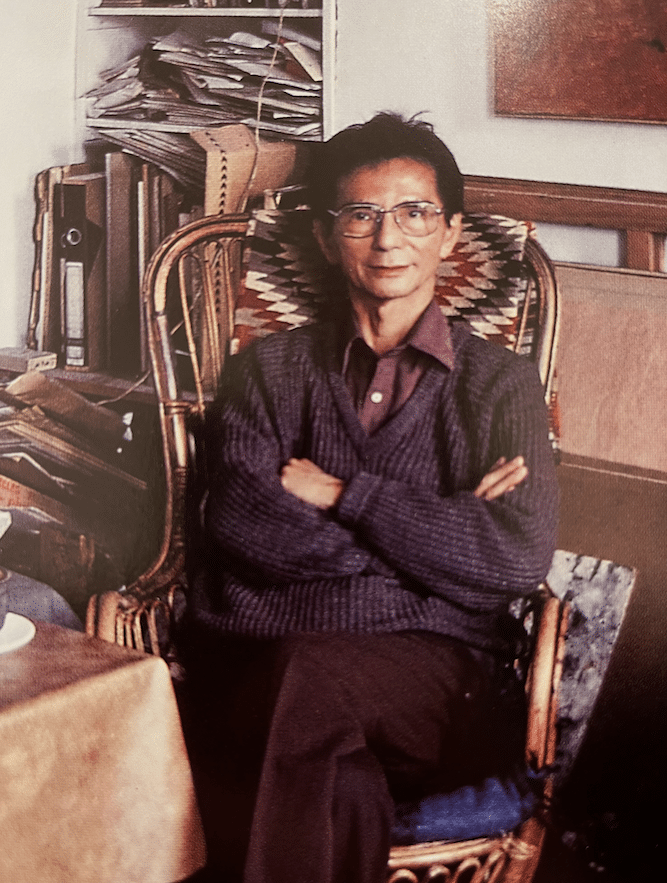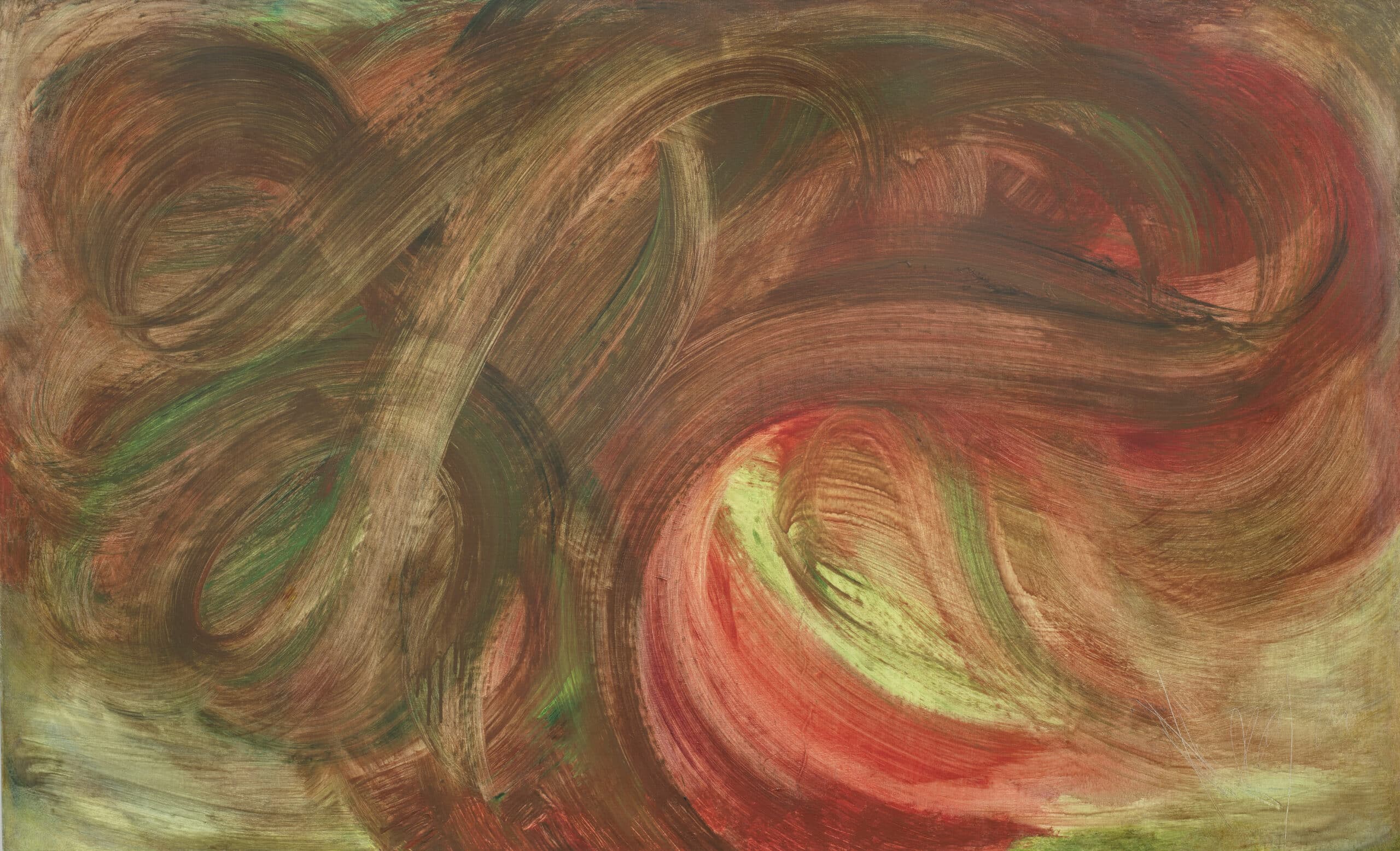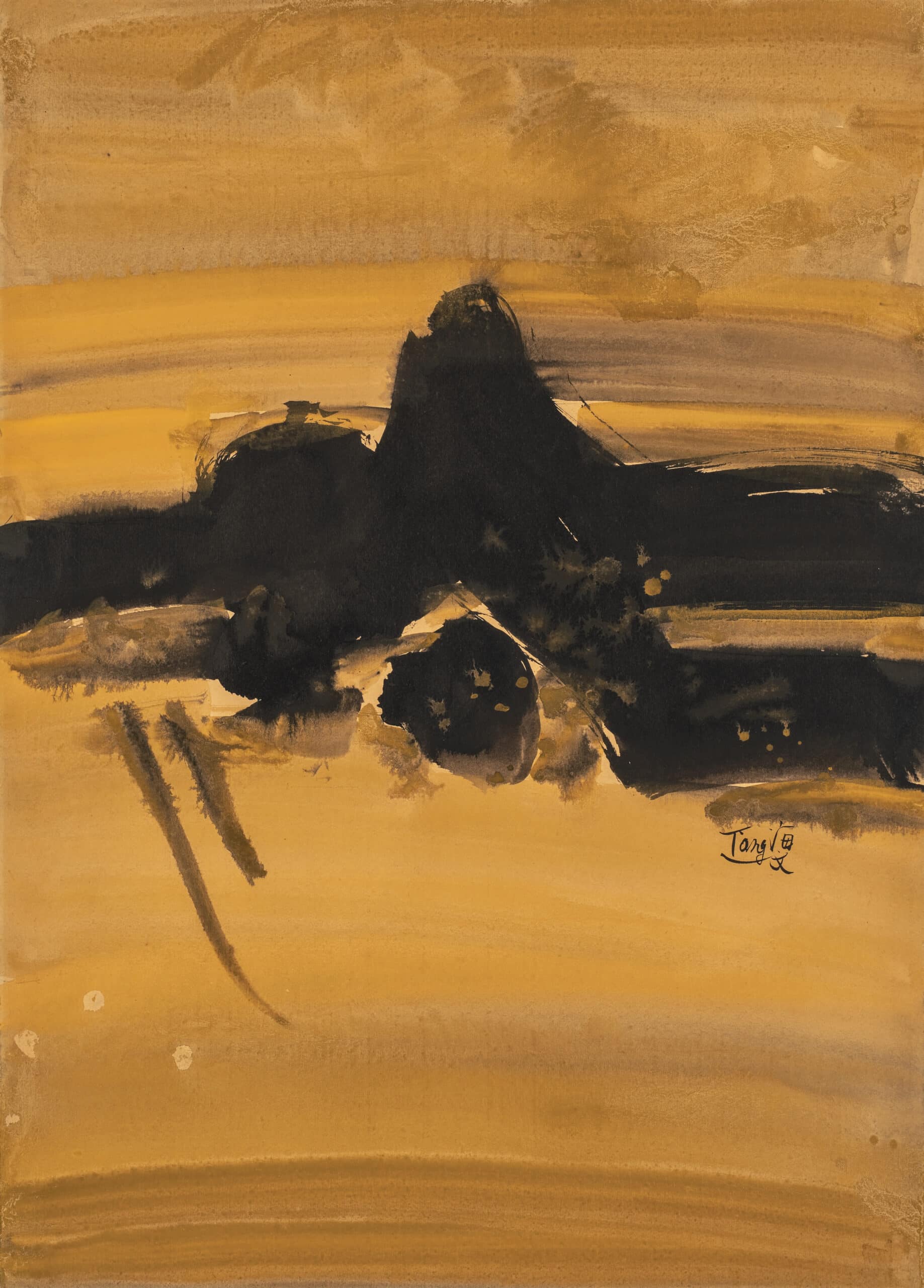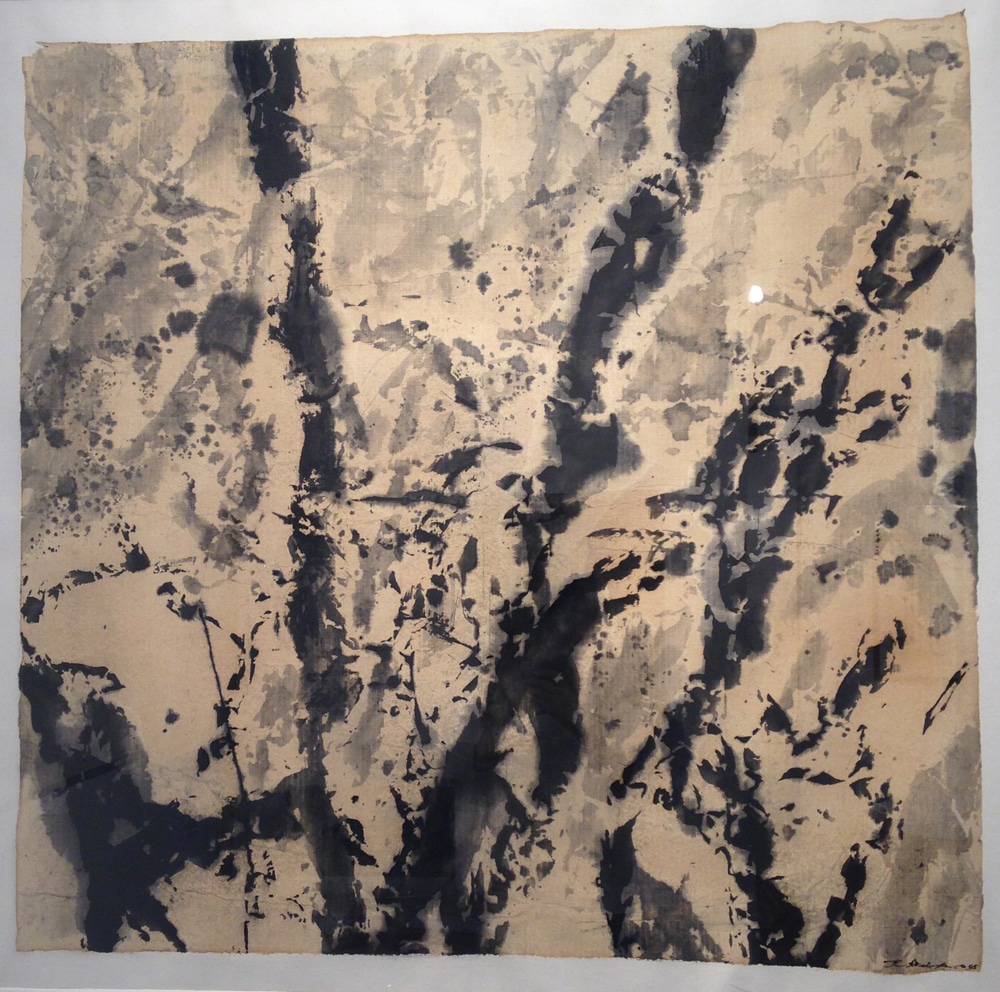T’ANG Haywen (1927-1991)
The aesthetic “crossbreeding” between Chinese landscape design and French gestural art gives the artist a special place in the history of painting, which is recognizable at first sight by its formats, then by its style, lyrical, landscape oriented, symbolist. He did not accept the term abstraction but rather that of naturalist, taoist and poetic.
T’ang Haywen worked a lot in standard formats, in particular by joining two sheets of 70 x 50 cm, to obtain diptychs of 70 x 100 cm.
The artist’s works are present in particular in the following institutions: Menil Mollection Houston, Art Institute of Chicago, M+ Hong Kong, Moderne art Museum of Paris, National Museum of asian arts Guimet, Cernuschi Museum of Paris…
On April 25, 2024, the Hervé Courtaigne Gallery will inaugurate T’ang Haywen’s monographic exhibition. Press release. At the same time, an exhibition at the Guimet Museum retraces the artist’s career with around a hundred major works.
Tradition
Looking at the work of T’ang Haywen inevitably leads to an attempt to discern an individual journey out of the collective background which brought Asian and Western art together during the 20th century. In this analytical attempt, the Taoist canons of chineses painting carry the weight of their millennia, but it will take considerable expertise for those whose eye and mind have not been trained in the classical aesthetics of China to determine whether T’ang’s painting is more traditional than innovative or more Western than Chinese.
The pictorial canons of that time were laid out by Xie He (6th century) and are as follows: vitality of the work expressed through spiritual consonance; use of the brush follows a well-structured method; faithfulness to the object in representing forms; appropriate distribution of color; composition based on the hierarchy of colors; transmission of the past models in the creation of copies.
The works largely escapes these canons, whether through the transposition of colors or through a very free treatment of form and the third dimension.
T’ang explicitly refers to three Western masters who were outside of the 20th century: Turner, Cézanne et Gauguin, along with the exception of Matisse.
Innovation
What becomes clear is how much T’ang’s creation, both his oils before 1970 and his inks, a medium definitively adopted around that time, easily fits into the innovative trends of the second School of Paris, particu- larly its lyrical or informal aspects.
There’s nothing to prevent placing T’ang in the midst of a « cloud » of forms and gestures, which would include the abstract landscape art of Debré or Lapicque, of Tal-Coat or the entirely gestural art of Degottex, alongside with whom he exhibited, of Marfaing, or even of Soulages.
And one will not be consoled by the near-total destruction of his work done in 1965 in San Francisco in a fire, which would have shed additional light on his engagement with Western modernity.
Another clear aspect of T’ang’s painting is its complete lack of servility. Regardless of his sources of influence or references, his works and style are immediately distinguishable and identifiable. He is a « remarkable » personality in both senses of the term, both figuratively and literally: he is free. Hervé Courtaigne
Buy the book published on the occasion of the exhibition “The painting of T’ang Haywen” on May 2024.







